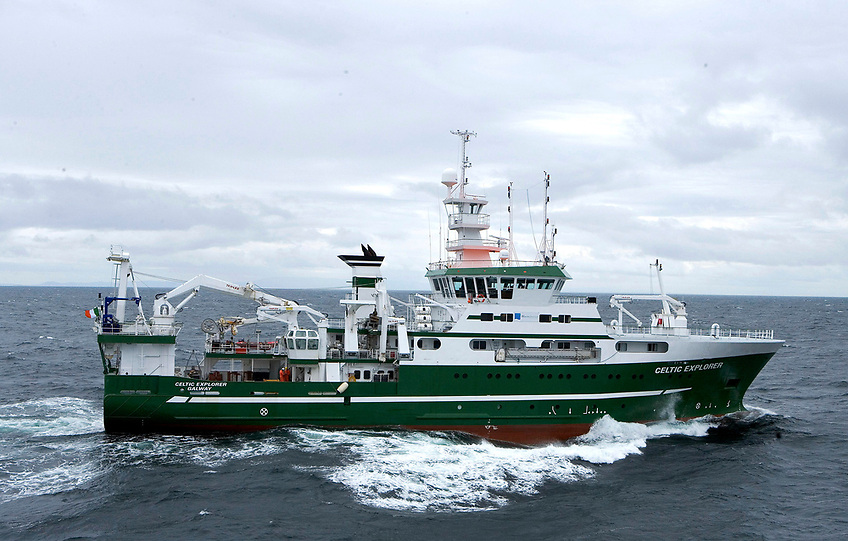#Crayfish - All water users are being urged to take precautions to stop the spread of crayfish plague after confirmation of an outbreak on the Lorrha River in North Tipperary, close to Lough Derg and the River Shannon.
Numbers of dead freshwater crayfish were reported on the river in Lorrha village earlier this month, and DNA analysis has now confirmed that the cause of death was crayfish plague.
This is the fourth confirmed outbreak of crayfish plague since 2015, with earlier outbreaks affected the Bruskey/Erne River in Co Cavan, the River Suir downstream of Clonmel and the River Deel downstream of Newcastle West.
The situation is being investigated by the National Parks and Wildlife Service (NPWS) of the Department of Culture, Heritage and the Gaeltacht, Inland Fisheries Ireland (IFI), the Marine Institute, and Tipperary County Council.
The kill has impacted white-clawed crayfish only. Other freshwater animals are not affected. This is a characteristic feature of the disease which only infects species of crayfish but causes 100% mortality.
There is no indication at this stage of how the disease reached the Lorrha River. It is however known that the outbreak on the Suir involved a different strain of the disease to that in the Cavan outbreak.
Samples from the Lorrha River are being tested to determine which strain has caused the outbreak of the disease.
All agencies involved in managing and protecting the rivers in Ireland have expressed concern that another outbreak has been detected, and are reiterating their advice and guidance to all users of the river to implement routine cleaning and drying of their equipment once they leave the river and before using it again.
This is especially important as it is known that the crayfish plague organism can be carried on wet equipment to new sites. Containment of the outbreak is essential to prevent spread to other as yet unaffected populations in Ireland.
Anyone using the river is being urged to observe the Check, Clean and Dry protocol. All wet gear should be checked for any silt or mud, plant material or animals. It then should be cleaned and finally dried. Disinfectant or hot water (over 60C) should be used to clean all equipment followed by a 24-hour drying period. This should be adopted as standard practice in all freshwaters.
Drying is especially important, including removing of any water from inside a boat and disposing of it on grass. A drying period of at least 24 hours is needed to ensure that a boat is clear of infectious organisms.
Furthermore, all water users are asked to operate a temporary ban on moving watersport and angling equipment out of the River Suir and River Deel catchments, commencing immediately.
Watersport and angling equipment currently in use in the Suir and Deel catchments may continue to be used there, but boats, angling or water sports equipment should not be transferred in or out of the catchments.
Users are requested to limit their activity to the river sections where they normally operate, and avoid moving around the catchment. More advice is available from Biodiversity Ireland.
People are also asked to alert the authorities of any mass mortality of crayfish or sightings of unusual crayfish that might be non-native species (eg crayfish with red claws, large size).
The white-clawed crayfish is a globally threatened species and Ireland holds one of the largest surviving populations. It is the only freshwater crayfish species found in Ireland and is present in lakes, rivers and streams over much of the island.
Throughout its European range, this species has been decimated by the impact of crayfish plague, which spread to Europe with the introduction of North American species of crayfish. Until 2015, Ireland was considered free of the disease and it remains the only European country without any established non-native crayfish species.
Many American crayfish species are resistant to crayfish plague, but can act as carriers of the disease, which is rapidly fatal when passed to the white-clawed crayfish.
The combined impact of the introduced crayfish species (which may out-compete the smaller native crayfish) and crayfish plague have completely eliminated the white-clawed Crayfish from much of its European range, leaving Ireland as the last stronghold of the species.
The species is protected under Irish Law and the EU Habitats Directive. It is illegal to deliberately release any non-native species of crayfish into Irish freshwaters.
If crayfish plague becomes established, there is a high probability that the white-clawed crayfish will be eliminated from much of the island. What’s more, if non-native crayfish are found to be established in Ireland, this could have a severe impact on habitats (eg destabilising canal and river banks by burrowing) and other freshwater species, such as salmon and trout fisheries.
However, there is no evidence to date that non-native freshwater crayfish have been introduced to Ireland.































































